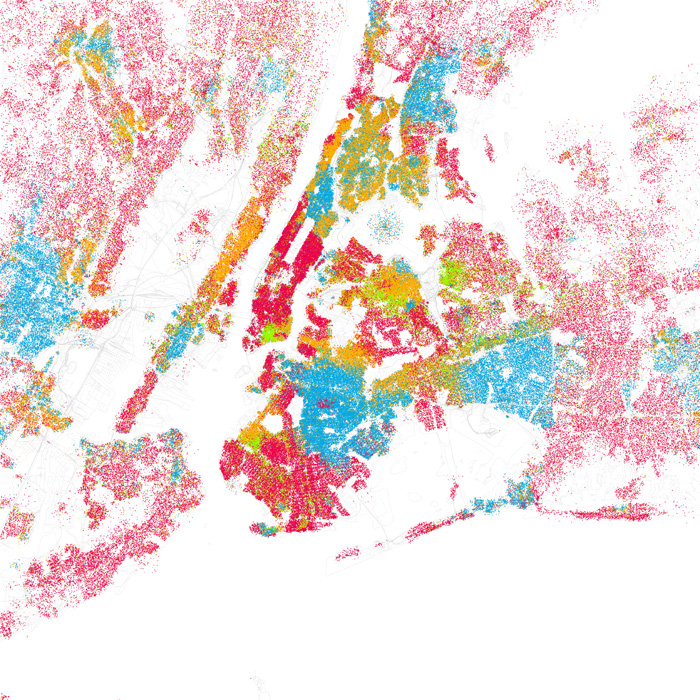How Segregated is Your City? (Wash DC, L.A., SF, Detroit, NYC, San Antonio)


People can receive earthquake data from the @USGSTED Twitter account. The site sends maps of earthquake zones to account holders.

The U.S. Geological Survey is using funds from the American Recovery and Reinvestment Act to support a student who’s investigating social Internet technologies as a way to quickly gather information about recent earthquakes.
In this exploratory effort, the USGS is developing a system that gathers real-time, earthquake-related messages from the social networking site Twitter and applies place, time, and key word filtering to gather geo-located accounts of shaking. This approach provides rapid first-impression narratives and, potentially, photos from people at the hazard’s location. The potential for earthquake detection in populated but sparsely seismicly-instrumented regions is also being investigated.
Social Internet technologies are providing the general public with anecdotal earthquake hazard information before scientific information has been published from authoritative sources. People local to an event are able to publish information via these technologies within seconds of their occurrence. In contrast, depending on the location of the earthquake, scientific alerts can take between 2 to 20 minutes. By adopting and embracing these new technologies, the USGS potentially can augment its earthquake response products and the delivery of hazard information.

Phi Beta Iota: STRONG ANGEL was the other major innovation besides CATALYST, Analysis 2000, and MCIA JNID. Below is Round II from STRONG ANGEL, with Round II from M4IS2 soon to be made public, built around SILOBREAKER (actually, Son of SILOBREAKER). We considered forcing visits to the Synergy Strike Force home page, but decided that the richness of the content there needed to be displayed here.
I. Introduction
Welcome to the MESS-KIT wiki: Minimum Essential Software Services for Knowledge and Information Transfer
II. Structure
The MESS-KIT system is composed of three basic components — the software package, the virtual environment and the hardware:
a. APPLICATION SOFTWARE PACKAGE: One or more Virtual Machine Instances that package together an operating system with a web server environment and all free-and-open-source/commercial-off-the-shelf software modules. Example: A VMware instance of an Ubuntu Linux installation with a full LAMP web server hosting environment and associated web software.
b. VIRTUAL MACHINE CLIENT SOFTWARE: One Virtual Machine Software Client to package, distribute, and host one or more Application Software Packages and abstract the application software from the host operating system. Examples: VMWare Fusion and Sun VirtualBox.
c. HARDWARE: Hardware on which the Virtual Machine Client Software and Application Software Package will run. The Hardware will include a host operating system. Examples: MacMini running OSX, ASUS eeePC Netbook running eeeBuntu Linux.
Continue reading “Handbook: Synergy Strike Force, Dr. Dr. Dave Warner, Round II”

Global Traffic Map 2010
The Global Traffic Map depicts voice traffic flows on the world’s largest international calling routes. Accompanying figures and tables provide valuable insight into regional traffic flows, price and revenue trends, top calling destinations, the impact of mobiles on the international voice market, and the scale of Skype.
Cell Phones & Cancer: New Report Sends Mixed Messages
A new study from Interphone, a study group within the , a segment of the World Health Organization, says there is no increased risk of brain cancer from cell phone use … but then seems to waiver a bit in its position. When it comes to adults, an increased risk of brain cancer is not established…
The Katrina Myth;
the Truth about a thoroughly unnatural disaster
Related:
Center for Public Integrity project on recent oil spill (May 11)
The Center for Public Integrity partnered with ABC News to reveal the serious lack of government and industry preparedness for the BP oil spill in the Gulf of Mexico. Exclusively-obtained government reports about a series of spill exercises — one as recently as March 25 — warned of a lack of tools to contain a spewing oil well in deep water and of bureaucratic confusion in declaring a “Spill of National Significance” that activates a full federal response. The Center's report was part of ABC's Nightline program on Tuesday, and was prominently featured on The Blotter, a blog written by ABC News' chief investigative reporter, Brian Ross.
As part of the oil spill drill story, the Center experimented with an online library on our website to share investigative materials with readers. We posted the U.S. Coast Guard's after-action reports on past oil spill training exercises using DocumentCloud — an index of primary source documents and a tool for annotating, organizing and publishing them on the web.
This should have but did not bring up the below graphic that comes up instead under the original title,